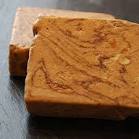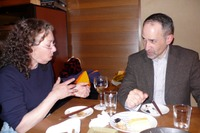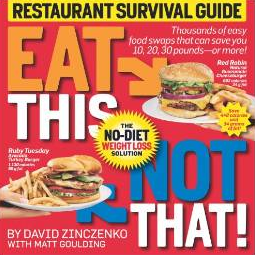Never mind what you call that!!! How high am I going to go?!
The American Diabetes Association advises that postprandial blood glucose shouldn’t exceed 180 mg/dl (plasma value) at two hours after the start of a meal. Personally I find this number exceedingly high and was surprised it was not lowered in their recent January 2009 Standards of Care. Many other diabetes educators I know find it high as well and several other associations and experts believe the two-hour postmeal goal should be less than 140 mg/dl. Whew! Better.
I’ve placed two posts here in the last two weeks that are excerpts from Hope Warshaw’s (R.D., B.C.-A.D.M., C.D.E.) wonderful article, “Rapid-Acting Insulin
Timing It Just Right.” Diabetes educator and dietitican Warshaw explains how to better time your insulin with your meals to get your post prandial blood sugars where you want them. Among the suggestions are occasionally checking your blood glucose after a meal at hours one, two, and three to help you determine when your blood glucose level peaks and starts to come down again. The overall key to controlling postprandial highs is better timing of rapid-acting insulin. Here are several other useful tips from her article:
Low glycemic index foods – If your blood glucose is less than 100 mg/dl before a meal and you plan to have a meal with a low glycemic index, wait until you start to eat to take your rapid-acting insulin.
Uncertain carbohydrate intake – If you don’t know how much carbohydrate you will eat at a meal, consider splitting your rapid-acting insulin dose. Take enough insulin before the meal to cover the amount of carbohydrate you are sure you will eat. Then as the meal goes on and you know how much more carbohydrate you will eat, take more insulin to cover that amount. This method is easiest if you are on an insulin pump. (But I can attest that it’s doable even on Multiple Daily Injections)
Drawn-out meals – Pump users who are planning to have a meal that is eaten over time, such as a cocktail party or Thanksgiving dinner or a meal that is higher in fat or lower in glycemic index and high in fiber, (it will slow your glucose rise) may use one of the optional bolus delivery tools on their insulin pump. Most insulin pumps allow you to deliver a bolus over time rather than all at once or to deliver some of the bolus immediately and the rest over the next few hours. People who inject insulin could take half their bolus at the start of a meal and the other half an hour or two later. (I do this and sometimes even inject 3 x as I graze. No it’s not fun but it does help more closely match the correct dose of insulin to what and when you’re actually eating.)
Snacks – Alison Evert, R.D., C.D.E., a diabetes educator at Joslin Diabetes Center at Swedish Hospital in Seattle, advises people to “take rapid-acting insulin with any amount of carbohydrate over 10 grams.” Although it is common to think that a few grams won’t make a big difference, the reality is that 10 grams of carbohydrate can raise many peoples’ blood glucose 30 or more points.
Unused bolus insulin – While the duration of action of rapid-acting insulin is usually given as 3–4 hours, some diabetes experts believe it may continue to lower blood glucose level for as long as 5 hours. You can assume that about 20% of a dose of rapid-acting insulin is used each hour after it is given. In John Walsh’s book Using Insulin and on his Web sitehttp://diabetesnet.com/diabetes_control_tips/bolus_on_board.php, he provides a table that shows insulin activity at 1, 2, 3, 4, and 5 hours after bolus doses of insulin from 1 to 10 units.
When two doses of rapid-acting insulin overlap, their effects overlap, too, and the result can be hypoglycemia. Therefore, when you’re considering the size of a bolus dose of insulin, it is critical that you factor in what Walsh calls “the unused insulin” or “bolus [insulin] on board.” This is the amount of “active” rapid-acting insulin left from a previous injection or bolus dose from a pump that continues to lower your blood glucose.
For instance, before lunch, you take a bolus of rapid-acting insulin. Three hours later you decide to have a snack with 30 grams of carbohydrate. You check your blood glucose and find that it’s high at 195 mg/dl. Assuming 1 unit of insulin for you covers 45 mg/dl, you calculate you’ll need two units of insulin to bring your blood glucose level down to your premeal target of 100 mg/dl and another two units to cover the snack you’re about to eat. You take the insulin, and several hours later, your blood glucose has dropped to 55 mg/dl. Why? Because you didn’t factor in the hour or so of action left from the bolus or injection you took at lunch.
To prevent hypoglycemia from unused insulin, get in the habit of thinking about when you took your last bolus dose and how much (if any) action is still left before taking another bolus to “correct” high blood glucose. Most pumps have a built-in feature that keeps track of how much of a previous bolus dose is still active. For us MDI people we have to log it on paper or in our heads.
Even though I’ve had diabetes for 37 years and injected insulin for 32 (Yes, I’m a type 1 who was misdiagnosed with type 2 and on oral meds the first 5 years) you can always learn something new or refresh what you know.
Thank you Hope.




